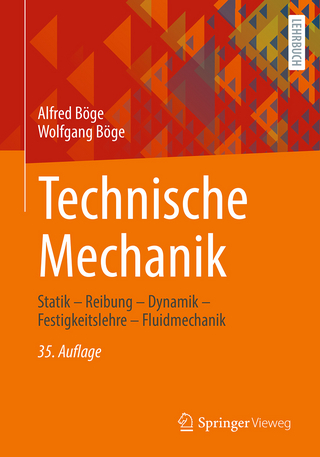
Principles of Foundation Engineering, SI
CL Engineering (Verlag)
9780357684672 (ISBN)
Dr. Braja Das is dean emeritus of the College of Engineering and Computer Science at California State University, Sacramento. He received his M.S. in civil engineering from the University of Iowa and his Ph.D. in geotechnical engineering from the University of Wisconsin. He is the author of several geotechnical engineering texts and reference books as well as more than 300 technical papers in the area of geotechnical engineering. His primary areas of research include shallow foundations, earth anchors and geosynthetics. Dr. Das is a fellow and life member of the American Society of Civil Engineers, life member of the American Society for Engineering Education and an emeritus member of the Stabilization of Geomaterials and Recycled Materials of the Transportation Research Board of the National Research Council. He has received numerous awards for teaching excellence, including the AMOCO Foundation Award, the AT&T Award for Teaching Excellence from the American Society for Engineering Education, the Ralph Teetor Award from the Society of Automotive Engineers and the Distinguished Achievement Award for Teaching Excellence from the University of Texas at El Paso.
Introduction.
1. Introduction.
Geotechnical Engineering. Foundation Engineering. Soil Exploration. Ground Improvement. Solution Methods. Numerical Modeling. Empiricism. Literature. References.
Part I: GEOTECHNICAL PROPERTIES AND SOIL EXPLORATION.
2. Geotechnical Properties of Soil.
Introduction. Grain-Size Distribution. Size Limits for Soil. Weight-Volume Relationships. Relative Density. Atterberg Limits. Liquidity Index. Activity. Soil Classification Systems. Hydraulic Conductivity of Soil. Steady-State Seepage. Effective Stress. Consolidation. Calculation of Primary Consolidation Settlement. Time Rate of Consolidation. Range of Coefficient of Consolidation, cv. Degree of Consolidation Under Ramp Loading. Shear Strength. Unconfined Compression Test. Comments on Friction Angle, ?'. Correlations of Undrained Shear Strength, cu. Sensitivity. Summary. Problems. References.
3. Natural Soil Deposits and Subsoil Exploration.
Introduction. Natural Soil Deposits. Soil Origin. Residual Soil. Gravity-Transported Soil. Alluvial Deposits. Lacustrine Deposits. Glacial Deposits. Aeolian Soil Deposits. Organic Soil. Some Local Terms for Soil. Subsurface Exploration. Purpose of Subsurface Exploration. Subsurface Exploration Program. Exploratory Borings in the Field. Procedures for Sampling Soil. Split-Spoon Sampling and Standard Penetration Test. Sampling with a Scraper Bucket. Sampling with a Thin-Walled Tube. Sampling with a Piston Sampler. Observation of Water Tables. Vane Shear Test. Cone Penetration Test. Pressuremeter Test (PMT). Dilatometer Test. Iowa Borehole Shear Test. K0 Stepped-Blade Test. Coring of Rocks. Preparation of Boring Logs. Geophysical Exploration. Subsoil Exploration Report. Summary. Problems. References.
Part II: SOIL IMPROVEMENT.
4. Soil Improvement and Ground Modification.
Introduction. General Principles of Compaction. Empirical Relationships for Compaction. Field Compaction. Compaction Control for Clay Hydraulic Barriers. Vibroflotation. Blasting. Precompression. Sand Drains. Prefabricated Vertical Drains. Lime Stabilization. Cement Stabilization. Fly-Ash Stabilization. Stone Columns. Sand Compaction Piles. Dynamic Compaction. Jet Grouting. Deep Mixing. Summary. Problems. References.
Part III: FOUNDATION ANALYSIS.
5. Shallow Foundations: Ultimate Bearing Capacity.
Introduction. General Concept. Terzaghi’s Bearing Capacity Theory. Factor of Safety. Modification of Bearing Capacity Equations for Water Table. The General Bearing Capacity Equation. Other Solutions for Bearing Capacity, Shape, Depth, and Inclination Factors. Case Studies on Ultimate Bearing Capacity. Effect of Soil Compressibility. Scale Effect on Ultimate Bearing Capacity. Eccentrically Loaded Foundations. Ultimate Bearing Capacity Under Eccentric Loading-One-Way Eccentricity. Bearing Capacity of a Continuous Foundation Subjected to Eccentrically Inclined Loading. Summary. Problems. References.
6. Ultimate Bearing Capacity of Shallow Foundations: Special Cases.
Introduction. Bearing Capacity of Foundation on Anisotropic Sand. Bearing Capacity of Continuous Foundation Subjected to Normal Load. Foundation Supported by a Soil with a Rigid Base at Shallow Depth. Foundations on Layered Clay. Bearing Capacity of Layered Soil: Stronger Soil Underlain by Weaker Soil. Bearing Capacity of Layered Soil: Weaker Soil Underlain by Stronger Soil. Continuous Foundation on Weak Clay with a Granular Trench. Closely Spaced Foundations-Effect on Ultimate Bearing Capacity. Bearing Capacity of Foundations on Top of a Slope. Bearing Capacity of Foundations on a Slope. Seismic Bearing Capacity and Settlement in Granular Soil. Foundations on Rock. Ultimate Bearing Capacity of Wedge-Shaped Foundation. Summary. Problems. References.
7. Vertical Stress Increase in Soil.
Introduction. Stress Due to a Concentrated Load. Stress Due to a Circularly Loaded Area. Stress Due to a Line Load. Stress Below a Vertical Strip Load of Finite Width and Infinite Length. Stress Below a Horizonta
| Erscheinungsdatum | 13.02.2023 |
|---|---|
| Sprache | englisch |
| Maße | 213 x 40 mm |
| Gewicht | 1769 g |
| Themenwelt | Technik ► Bauwesen |
| ISBN-13 | 9780357684672 / 9780357684672 |
| Zustand | Neuware |
| Informationen gemäß Produktsicherheitsverordnung (GPSR) | |
| Haben Sie eine Frage zum Produkt? |
aus dem Bereich


